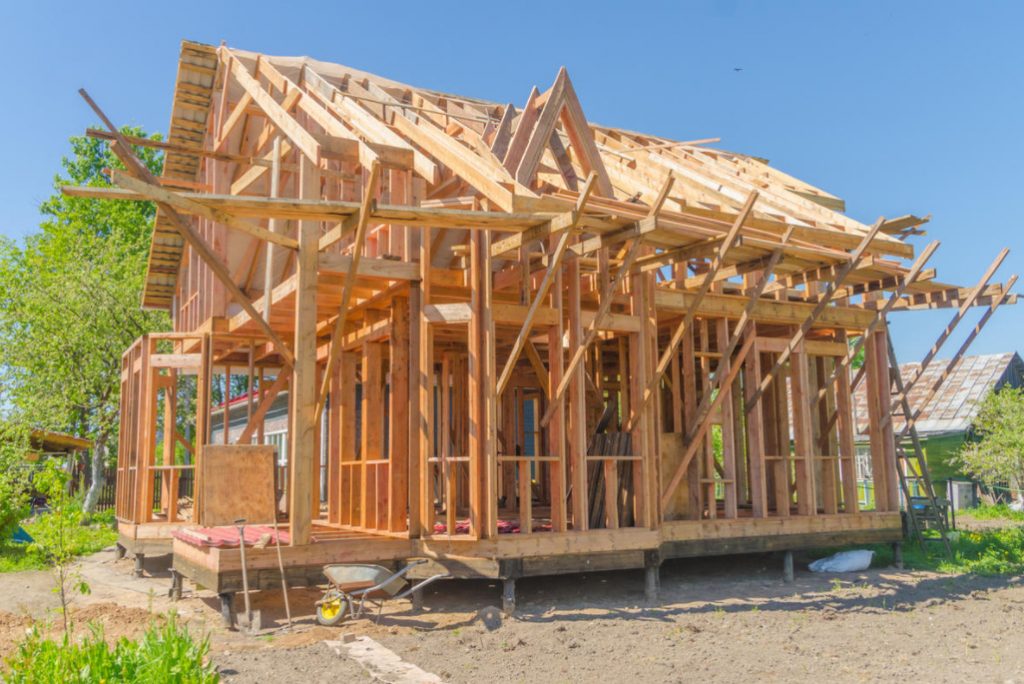Recently, pile foundations on screw supports have gained unprecedented popularity. But are they as strong and reliable as it is commonly believed? Moreover, there are no recommendations for their use in regulatory documents.
Advantages of screw piles
The undisputed advantage of vane support pillars for the foundation is the high technological efficiency and speed of their installation, especially when using mechanization tools. Although a huge number of summer residents screw them into the ground manually.
The installed screw pile is immediately ready for use even when concreting the inner lumen of the trunk. There is no need to wait for the concrete to gain brand strength, as the loads are perceived by the steel shell of the pile.
Screw piles can be installed at a wide range of ambient temperatures (from -35 to +35°C). They are not afraid of a high level of ground water, they do not require drainage of the construction site, they are not afraid of swollen soils. They can be placed close to existing buildings, because such piles slightly displace the soil during installation. It is not surprising that they are often used to repair and strengthen the foundations of existing buildings (in combination with jack systems).
Thanks to the blades, screw piles have a good load-bearing capacity (up to 6 blades can be placed on one trunk), they perfectly resist various pulling loads — wind or frosty heaving of soils. These supports can be installed at any angle to the horizon and on uneven areas.
But do not forget that these advantages apply exclusively to foundations made of industrially produced piles, the parameters and quality of which are regulated by the International Building Standards ICC AC358 Helical Foundation Acceptance Criteria.

Restrictions in the application
This is perhaps the most pressing issue that manufacturers carefully avoid. For answers, you will have to refer to the regulatory documentation and special literature. The aforementioned ICC standard AC358, which regulates the requirements for materials and structures of foundations made of screw supports, provides a number of restrictions for their application.
Thus, paragraph 1.2.1 of ICC AC358 restricts the use of piles only for buildings and structures of earthquake resistance class from A (for earthquake-proof areas) to C (for areas with moderate seismic activity). Paragraph 1.2.2 of the same standards lists the conditions in which steel screw piles cannot be used:
- due to the high rate of electrochemical corrosion of steel in soils with a specific electrical resistance of less than 1,000 ohms / cm;
- in soils with a pH of less than 5.5, which includes peat;
- in soils with a high content of organic components;
- in soils with a sulfation of more than 1,000 ppm (sulfates in the soil are also dangerous for unprotected concrete of reinforced concrete piles);
- at landfills with waste, garbage, dumps of soil;
- on soils containing mine dumps;
- on soils that do not provide lateral support for piles (for example, peat, loose powdery sand).
Before making a decision on the use of steel screw piles on your site, it is recommended to measure the pH and sulfation of the soil, as well as their specific electrical conductivity.
The foundation of screw piles is considered to be buried, which means that the condition of mandatory lateral support of the soil must be met for it. For piles that are not connected to each other in groups (protruding above the ground or installed in water), the following condition must be observed: the support must be buried in dense soils by at least 1,542 mm, and in soft ones-by at least 3,048 mm.

Design characteristics
The diameter of the screw pile shaft, the diameter of the blades and the thickness of the metal are calculated based on the loads and operating conditions.
The following requirements apply to the steel screw pile in international standards:
- the thickness of the pile blades – from 9.5 to 12.5 mm;
- the diameter of the screw pile blade should be from 8 to 14 inches (20 to 35 cm);
- the minimum thickness of the pile trunk wall in non-aggressive soils is 8 mm, in aggressive soils — 9.5 mm.;
- in the case of high corrosion due to specific soils, additional galvanizing of piles is required, the use of zinc anodes;
- the minimum thickness of the polymer coating of the screw pile is 0.4 mm.
In Western countries, screw piles are mainly used for the construction of temporary structures with a planned service life of 50 years.
Grillage device
Creating connections between screw piles is really necessary when installing them on soils with weak lateral support. But when working on corrosive soils, it is not recommended to arrange galvanic connections between piles and other conductive elements of building structures.
The combination of all steel supports in one electrical system by conductors leads to an acceleration of electrochemical corrosion due to the existing difference in electrical potentials of different physical and chemical composition of the soil sections.

The correct design solution for connecting piles into a single system is to tie the pile heads with wooden structures or tie the steel elements of the heads-caps of screw piles and crimp clamps, isolated from the pile trunks with a dielectric material — for example, a polymer-bitumen waterproofing membrane.





